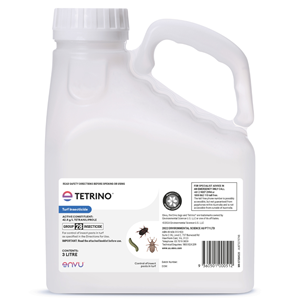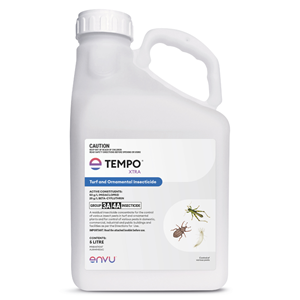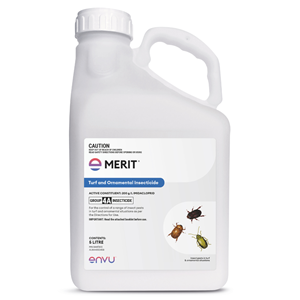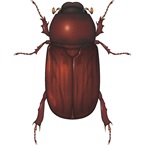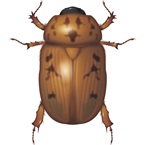Species category: Beetles & Weevils
Scientific name: Heteronychus arator
Description
An adult is long, cylindrical with a shiny black/chestnut brown exterior; it typically reaches 15-25mm in length. The abdomen is covered by its front wings that form a hard protective shell.
The larvae look similar to other white ‘curl grubs’ but will have a brown swollen abdomen from their soil and plant based diet.
An African native, it can now be found all across Australia but is most prevalent in Western and Southern Australia.
The larvae are soil dwellers but the adult also spends time below ground, tunnelling frequently and disrupting the soil, often creating small soil mounds. They can also be found just above soil level.
Behaviour
Beetles are often found in the soil prior to planting and easily identified in a soil sample. These insects can fly and are attracted to lights. They have been known to take mass flights in autumn.
As larvae they burrow into the soil and feed on the roots, going a little deeper underground during the 2nd and 3rd instar phases where they often cause the most damage to turf by cutting off the growing point. Adults will emerge in mid-summer to autumn.
Risks
Larvae occur from early spring to mid-summer and cause significant damage to turf roots. Older grasses may be hardy enough to survive an infestation but will be weakened. New shoots struggle; they can brown off and die as the insect reduces their ability to soak up moisture and nutrients.
Adults are constantly tunnelling and the mounds they create greatly disrupt playing surfaces.

